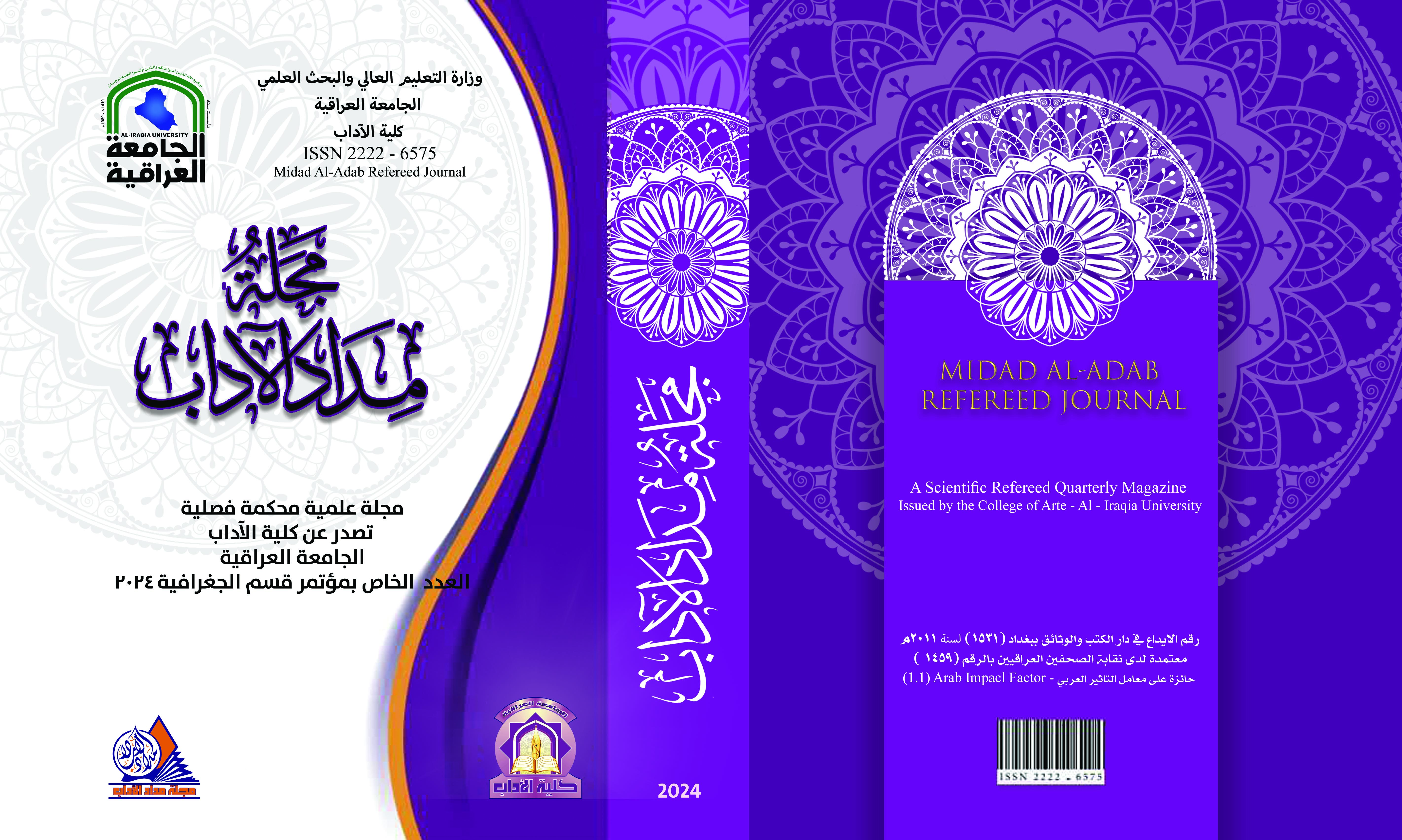تطبيقات الGIS والمرئيات الفضائية لدراسة التغيرات المناخية والمشاكل البيئية لتحقيق التنمية المستدامه في العراق
DOI:
https://doi.org/10.58564/ma.v14iالعدد%20الخاص%20بمؤتمر%20قسم%20الجغرافية.1450الكلمات المفتاحية:
الكلمات المفتاحية : التغييرات المناخية, الجفاف, مؤشر الجفاف بالاشعة المرئية و تحت الحمراء القريبة VSDI , مؤشر الفرق الطبيعي للمياه NDWI و المعدل MNDWIالملخص
تعتبر التغيرات المناخية من المشاكل الرئيسة في العالم عامة والعراق خاصة كون البيئة العراقية من الهشاشة بحيث لا تستطيع مواجهة هذا التحدي لذلك كانت هذه الدراسة والتي تتمحور بثلاث محاور .المحور الاول تناول ماهية التغيرات المناخية، اسبابها، دلائلها، اثارها ونتائجها، كيفية مواجهتها وطرق التكيف لها. اما المحور الثاني فتناول المشاكل البيئية الناتجة عن التغيرات المناخية في العراق(التصحر) والجفاف وتم دراسة بحيرة الرزازة كحالة دراسية. اما المحور الثالث فتناول الاساليب والتقنيات الحديثة المستعملة (RS،GIS، والمرئيات الفضائية)لدراسة هذه التغيرات. تم استعمال برنامج ARC map, ARC info, وبرنامج الايرداس,SPSS لتحليل البيانات الاحصائية ورسم الخرائط وخلصت الدراسة لمجموعة من الاستنتاجات اهمها ان العراق من الدول الاكثر تأثرا بالتغيرات المناخية رغم ضعف مشاركته في نسبة انبعاث الغازات الدفيئة واكاسيد الكاربون وانعكست تاثير التغير المناخي على الاقتصاد الوطني والبيئة والمناخ من خلال الارتفاع غير المسبوق لدرجات الحرارة وانخفاض معدلات سقوط الامطار وزيادة التبخر والجفاف نتيجة تدني مستوى مناسيب الانهار والايرادات المائية واتساع ظاهرة التصحر. ومن التوصيات لغرض التكيف الانتقال من استعمال الوقود الاحفوري الى مصادر الطاقة المتجددة التي يمتلكها وتم اقتراح عدد من الاقاليم المناسبة لها كما مر في الدراسة للتخلص من التلوث البيئي والاحتباس الحراري.
التنزيلات
منشور
إصدار
القسم
الرخصة

هذا العمل مرخص بموجب Creative Commons Attribution-NonCommercial-NoDerivatives 4.0 International License.








